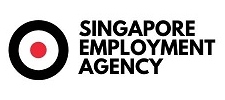As Singapore advances into 2026, a new set of statutory, payroll, and tax changes are poised to reshape how employers and workers manage compliance. From the increased CPF Ordinary Wage Ceiling to heightened CPF contributions for platform workers and the expiry of several key tax incentives, businesses will need to review payroll structures, employee costs, and financial planning frameworks closely.
This article breaks down the most significant statutory and policy developments expected between 2025 and 2026, guiding employers and business owners on how to stay compliant and prepare for cost implications.
1. CPF Ordinary Wage Ceiling Increases to $8,000 in 2026
The Central Provident Fund (CPF) Ordinary Wage Ceiling (OWC) — the cap determining the maximum amount of an employee’s monthly wages subject to CPF contributions — will undergo a stepped increase.
| Year | Ordinary Wage Ceiling (Monthly) | Statutory Reference |
|---|---|---|
| 2025 | $7,400 | CPF (Amendment) 2025 |
| 2026 | $8,000 | CPF (Amendment) 2026 |
This increase means that, by 2026, CPF contributions for higher-income employees will rise accordingly, as both employers and employees contribute based on a larger ceiling. The CPF Board’s phased approach ensures a smoother transition, allowing businesses to progressively adjust payroll budgets.
For employers, this change will increase total employment costs where staff earn above $7,400 monthly. For employees, however, it represents greater retirement and healthcare savings, reinforcing Singapore’s long-term social security goals.
2. Escalation of CPF Contributions for Platform Workers
From 2026, platform workers — including delivery riders and private-hire drivers — classified as “Group A workers” (those born on or after 1 January 1995 or who voluntarily opt-in) will face higher CPF contribution rates. These increases affect both the platform operator’s share and the recoverable worker portion.
| Age Group | Effective Date | Operator Contribution (% of APE) | Recoverable from Worker (% of APE) |
|---|---|---|---|
| ≤ 35 years | 1 Jan 2025 | Up to 14% | Up to 10.5% |
| ≤ 35 years | 1 Jan 2026 | Up to 20% | Up to 13% |
| 35–45 years | 1 Jan 2025 | Up to 16% | Up to 12.5% |
| 35–45 years | 1 Jan 2026 | Up to 22% | Up to 15% |
| 50–55 years | 1 Jan 2025 | Up to 12.5% | Up to 9% |
| 50–55 years | 1 Jan 2026 | Up to 12.5% | Up to 5.5% |
(APE refers to Aggregate Platform Earnings for the relevant month)
This stepped escalation signals a paradigm shift in how gig-economy contributions are structured. The move aims to narrow the gap between traditional employees and platform-based workers, ensuring a fairer CPF safety net.
From a compliance standpoint, platform operators must prepare their systems for these higher rates and align their business models to accommodate the increased manpower cost base. Notably, an Additional Deduction for Voluntary CPF Contributions for Group A workers will be available from YA 2026 to YA 2029, offering temporary tax relief to ease the transition.
3. Expiry of Key Business Tax Incentives at End-2025
Several tax relief schemes and incentive programs will cease or phase out by 31 December 2025, impacting tax planning and corporate structuring decisions for 2026.
| Incentive / Scheme | Cessation Date | Key 2026 Impact |
|---|---|---|
| Further/Double Deduction for Salary Expenditure (Section 14I) | 31 Dec 2025 | No new approvals post-2025 |
| Capital Allowances for Industrial Building Construction (Section 19E) | 31 Dec 2025 | New approvals disallowed from 2026 |
| Fund Management Company (FMC) Concessionary Tax Rate (Section 13U) | 31 Dec 2025 | Scheme ends for new approvals |
| Deduction for Courses, Seminars, or Conferences (Section 39(12C)) | YA 2026 | Deduction ceases from YA 2026 |
These expirations mean that no new claims or approvals will be accepted for these incentives from 2026 onwards. Businesses currently relying on these reliefs should expedite applications and approvals before 31 December 2025.
The cessation reflects Singapore’s ongoing tax reform efforts, streamlining incentive frameworks to focus on higher-value economic activities aligned with the Forward Singapore vision.
4. Staggered Implementation of S Pass Salary Criteria
The Ministry of Manpower (MOM) has introduced new S Pass qualifying salary requirements effective 1 September 2025. However, renewal applications are treated differently depending on expiry dates.
-
Renewals in 2025 (or before 1 September 2026):
Still assessed using the existing lower qualifying salary — e.g., $3,150 for general sectors. -
Renewals expiring from 1 September 2026 onward:
Must meet the new salary thresholds — $3,300 (general) and $3,800 (financial services).
This staggered timeline creates a transitional window where businesses renewing early in 2026 will encounter higher qualifying benchmarks, while those renewing in late 2025 retain earlier thresholds. Strategic timing of renewals can thus optimise workforce planning and salary budgets during this phase.
5. Continuing Employment and Tax Adjustments in 2026
Several measures introduced in 2025 will continue seamlessly into 2026, maintaining compliance consistency across payroll, work permit, and GST frameworks.
Key Continuing Policies:
-
S Pass Levy:
The standardised S Pass levy of $650 per holder, effective from 1 September 2025, remains unchanged throughout 2026. -
Work Permit Framework Adjustments:
From July 2025, the maximum employment age rises to 63, while employment restrictions are relaxed — both continuing into 2026. -
Overseas Humanitarian Donations Deduction:
Deductions for qualifying overseas cash donations apply from 1 January 2025 to 31 December 2028, ensuring continuity through 2026. -
GST InvoiceNow Requirement:
New companies registering for GST after 1 November 2025 must use InvoiceNow-ready e-invoicing systems. From 1 April 2026, this expands to all new voluntary GST registrants, furthering Singapore’s digital compliance agenda. -
Debt Securities Interest Exemption:
The exemption on interest or premium income from qualifying debt securities extends to issues made up to 31 December 2028, with local cost-payment requirements maintained.
These developments underline Singapore’s commitment to regulatory modernization, digital compliance, and sustainable fiscal policies.
Preparing for Compliance in 2026: Practical Steps for Businesses
The confluence of CPF, tax, and employment changes calls for early preparation and budget recalibration. Businesses should consider the following strategic measures:
-
Payroll and HR Audit:
Review employee earnings against the new CPF OWC and ensure HR software updates reflect 2026 contribution rates accurately. -
Platform Cost Modelling:
For digital platforms, simulate CPF cost implications for 2026 and re-negotiate service agreements if necessary. -
Tax Planning Acceleration:
Secure all approvals for expiring incentives before the 31 December 2025 deadline to retain eligibility. -
S Pass Renewal Timing:
Schedule renewals strategically to benefit from transitional salary thresholds where possible. -
Digital Readiness:
Adopt InvoiceNow-compatible invoicing systems ahead of the April 2026 mandate to streamline GST compliance.
By implementing these proactive measures, businesses can mitigate cost shocks and maintain regulatory alignment in Singapore’s evolving fiscal environment.
Conclusion
The year 2026 will be a pivotal one for payroll, taxation, and employment compliance in Singapore. The increase in CPF contribution ceilings, higher CPF rates for platform workers, and the sunsetting of long-standing tax incentives will require companies to reassess their operational costs and compliance readiness.
If you like to submit a question, or would like us to touch on certain topics, you may email us at [email protected]. When in doubt, seek legal advice or consult an experienced licensed Employment Agency with the Ministry of Manpower.
Yours Sincerely,
The editorial team at Singapore Employment Agency
Little Big Employment Agency Pte. Ltd. is a licensed Employment Agency with the Ministry of Manpower with license number 19C9790.

